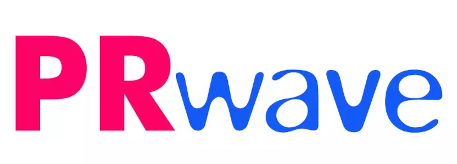Yet, what is it that constitutes the long lasting cultural trend that has been modeling the eclectic consumer? The eclectic consumer is motivated by the Fear of Missing Out, a motive that I have been researching for the past five years. At present, over 70% of the population is motivated by the Fear of Missing Out. About 30% could be considered highly motivated by FoMO. That means a great big number of customers. The eclectic consumer has become frenzied by the abundance of opportunities, and is now addicted to the concept. She does not want to miss anything and so, her life is multiplex, yet laden. She is always accessible by cellphone or email, updated, open to new concepts, and not so afraid of changes. She spends fewer years than she used to spend in the same apartment, same job, and same marriage (that is, if she does not belong to the group of the eternally single). In contrast to the past, she is proud of being flexible and developing, and is not committed to a fixed personality. And, by the way, she is much MUCH less loyal to brands than she used to be. In fact, she embraces new brands so impetuously, that the marketers are convinced as to their own ingenuity.
So, how do you market to the eclectic customer who is afraid of missing out? Well, there are many facets to this art; however, at this point I want to focus on market segmentation at an era in which customers refuse to be classified in convenient clusters, considering that this phenomenon is prevalent in many product categories. One central insight for the re-designing of market segmentation is as follows: the eclectic consumer, who will not miss anything, ‘connects’ to different, even contradictory, motivations he has at different times. Because these motivations are not necessarily compatible with one another, the eclectic consumer is constantly in motion from one stereotype to another, from one lifestyle to another. That is why he chooses to drink pro-biotic yogurt when he gets up in the morning, and to grind up a stake & French fries lunch at noon, topping it off with a cigarette. After work, he meets up with friends for a delicate Japanese dinner, which he concludes with a bottle of fine French cognac.
In order to adapt to this consumer reality, our segmentation (and subsequently, our products and services, our advertising and so on) should be formulated not according to groups of people, but according to motivations and uses. Note that when I refer to ‘uses’ I mean, among other things, psychological uses, such as mood control, self-esteem enhancement, and fantasy support, and I also mean social uses, such as signaling others things like group affiliation, specific atmospheres, or impression control.
Note that this constitutes a formation of a real revolution in segmentation thinking. Some of you would probably comment that this is not so much about segmentation as it is about consumer behavior analysis. Well, let me answer you. Let us recall the original purpose of market segmentation. It is the furcation of the market into smaller units enabling us to focus our marketing/branding/advertising activities, and to achieve differentiation, so that we could win advantages we could not get when working with the entire market. The search for small consumer groups has evidently stopped delivering results. However, the pursuit after groups of ‘purchases/consumptions’ rather than of people, could offer new horizons.
Let us sharpen things a little. According to the old segmentation, each group is characterized by a need/preference/motivation. The new approach preserves this concept. Yet, in the new reality, and according to the new approach, the motivation is no longer common within a defined consumer group. A ‘segment’ is now a group of ‘purchases/consumptions’ qualified by a certain context of purchasing or consuming a product plus a specific motivation.
When we segment according to this approach, we analyze consumer behavior; we identify the various contexts of product consumption, and the different motivations that characterize consumers who experience those contexts. The new relevant segments could consist of certain moods (such as the ‘I’m going to teach that husband of mine a lesson he’s never going to forget’ segment), certain social situations (such as the ‘Wow, I haven’t seen YOU in a long time’ segment), all according to what is relevant to that specific product category. Note that when we meet a given purchasing context (a dinner at a restaurant) there are varied consumer motivations that exist (‘tonight we’re going out solo, no kids’, versus ‘we’re celebrating grandpa’s birthday’), and they would be considered different market segments. A specific consumer is likely to participate in one segment, few segments, or no segment. Nevertheless, much like the old segmentation, every segment accounts for a share of our sales, and we can do our profitability calculations accordingly.
I know this can seem a little strange at first, so let us examine an additional example. Let us say that you are a shampoo manufacturer. Then, the segment of “I’m going to look fabulous in that party” would be responsible for a certain percentage of your income, and so will the segment of “I do so need a half an hour to myself”, and the segment of “my god, all those expenses are wearing me out, I must cut down a little”. The same consumer could belong to each of those market segments, at different times.
According to this approach, then, our marketing activities, at all levels, should be aimed towards a context of purchasing/consumption plus a certain motivation, and not towards groups of consumers.
Finally, let us examine one more example, a segment of the big and significant market of fashion accessories, especially the low priced ones. That’s the segment of “Hey, that’s new, where did you get it from?”. The central benefit motivating this segment is the psychological/social instrumentality: the opportunity to win a little bit of renewed attention from their surroundings. Marketers specializing in this segment tend to launch short-term brands (although many do not go beyond short-term products). Why short? Because novelty is very quick to fade and this need is one of the regenerating needs (that require ever-new sources of satisfaction) aptly catered to by Short-Term Brands. According to the new approach described here, you could launch such a product or a brand; however, it will not be designed to appeal to a particular group of customers. Entirely different customers, with relation to their genders, age groups, socio-economic layers, family orientations, and achievement seeking levels, will purchase your product when ever they experience a longing for getting a little bit of extra attention, again.
* * *
Dr. Dan Herman is the owner and CEO of Herman – Strategic Consultants serving worldwide clients ranging from local mid-sized companies to Fortune Global 500 corporations. Together with his highly trained team, he creates Unique Success Formulas for organizations and for brands, designed to achieve an unfair advantage, in fact, a sort of monopoly.
To find out more, visit his Web site: www.danherman.com.



